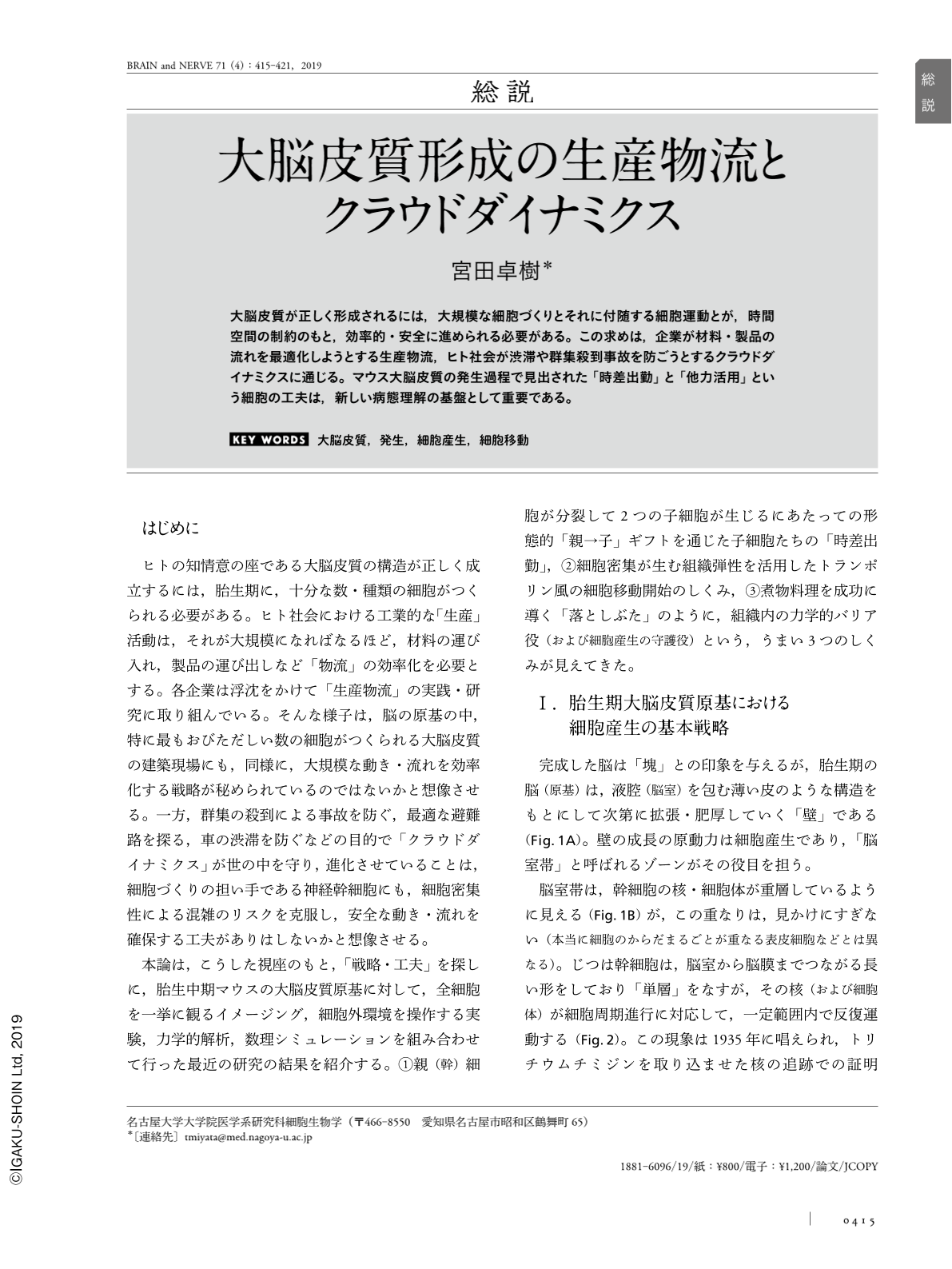Japanese
English
- 有料閲覧
- Abstract 文献概要
- 1ページ目 Look Inside
- 参考文献 Reference
大脳皮質が正しく形成されるには,大規模な細胞づくりとそれに付随する細胞運動とが,時間空間の制約のもと,効率的・安全に進められる必要がある。この求めは,企業が材料・製品の流れを最適化しようとする生産物流,ヒト社会が渋滞や群集殺到事故を防ごうとするクラウドダイナミクスに通じる。マウス大脳皮質の発生過程で見出された「時差出勤」と「他力活用」という細胞の工夫は,新しい病態理解の基盤として重要である。
Abstract
The cerebral cortex is constructed through massive cell-production and accompanying cellular movements, which should be efficient and safe under spatiotemporal limitations. Efficiency and safety are also needed in the “production logistics” of manufacturing companies, and the “crowd dynamics” pertaining to people or vehicles. Investigating the growth of the embryonic cerebral cortex with an insight into such a system-level management of collective flows has recently revealed interesting cellular strategies to combat the spatiotemporal limitations. First, two sibling cells enter a narrow outflow space to overcome a bottleneck via a sequential departure similar to staggered commuting. This is achieved by asymmetric inheritance from the mother cell to one of the sibling cells with respect to cellular structure, and is analogous to a priority boarding pass. Second, newly generated sibling cells passively propel due to a mechanical force from the surrounding space. This space, densely filled with neighboring cells' processes, is elastic and assists in an indirect mother-to-daughter energy transfer. The mother cell has stored mechanical energy during its lateral/centrifugal expansion stage of mitosis while the surrounding space centripetally recoils to push the daughter cells. Third, young neurons act as a mechanical barrier to the movement of the mother cells thereby ensuring their normal proliferation.

Copyright © 2019, Igaku-Shoin Ltd. All rights reserved.


